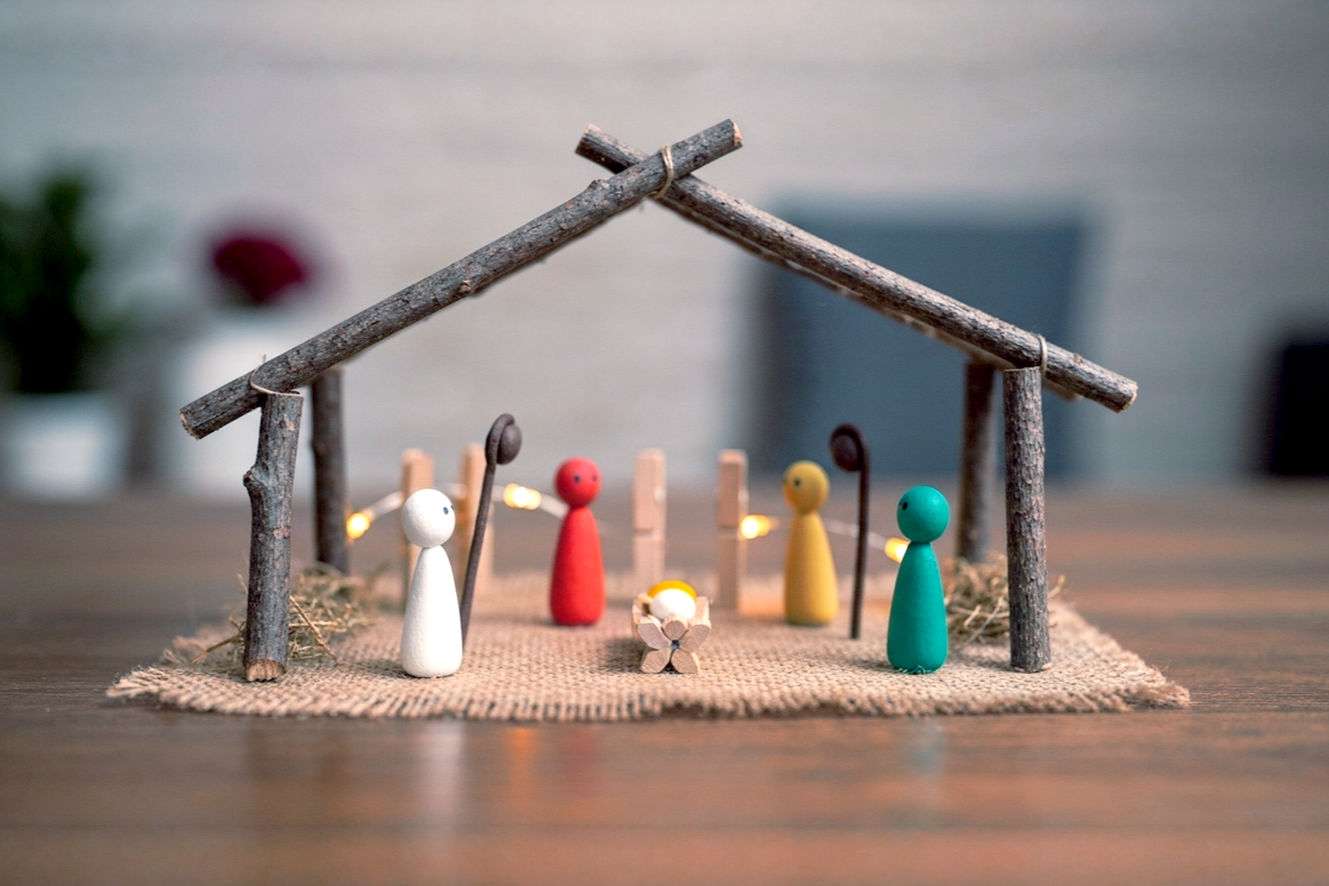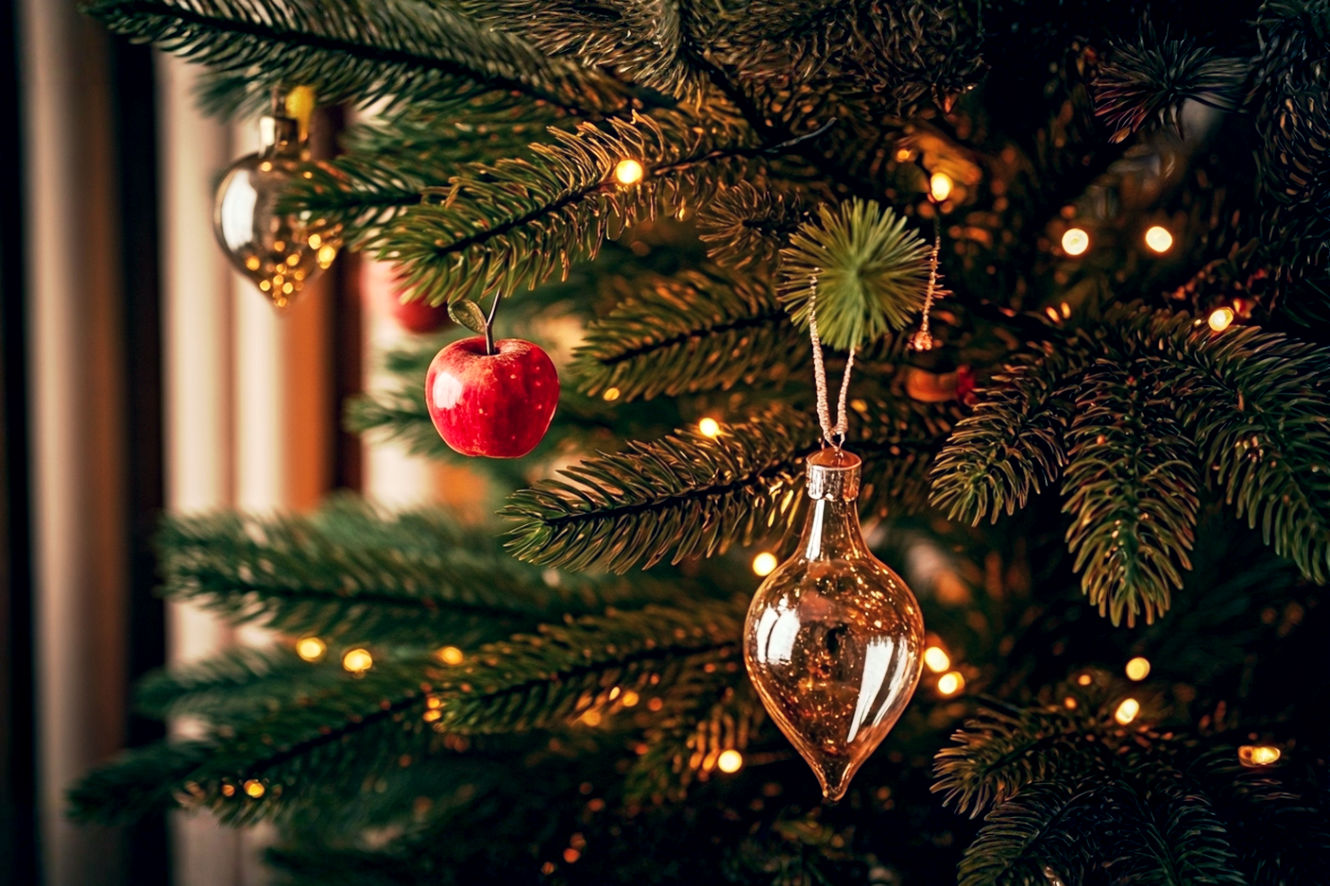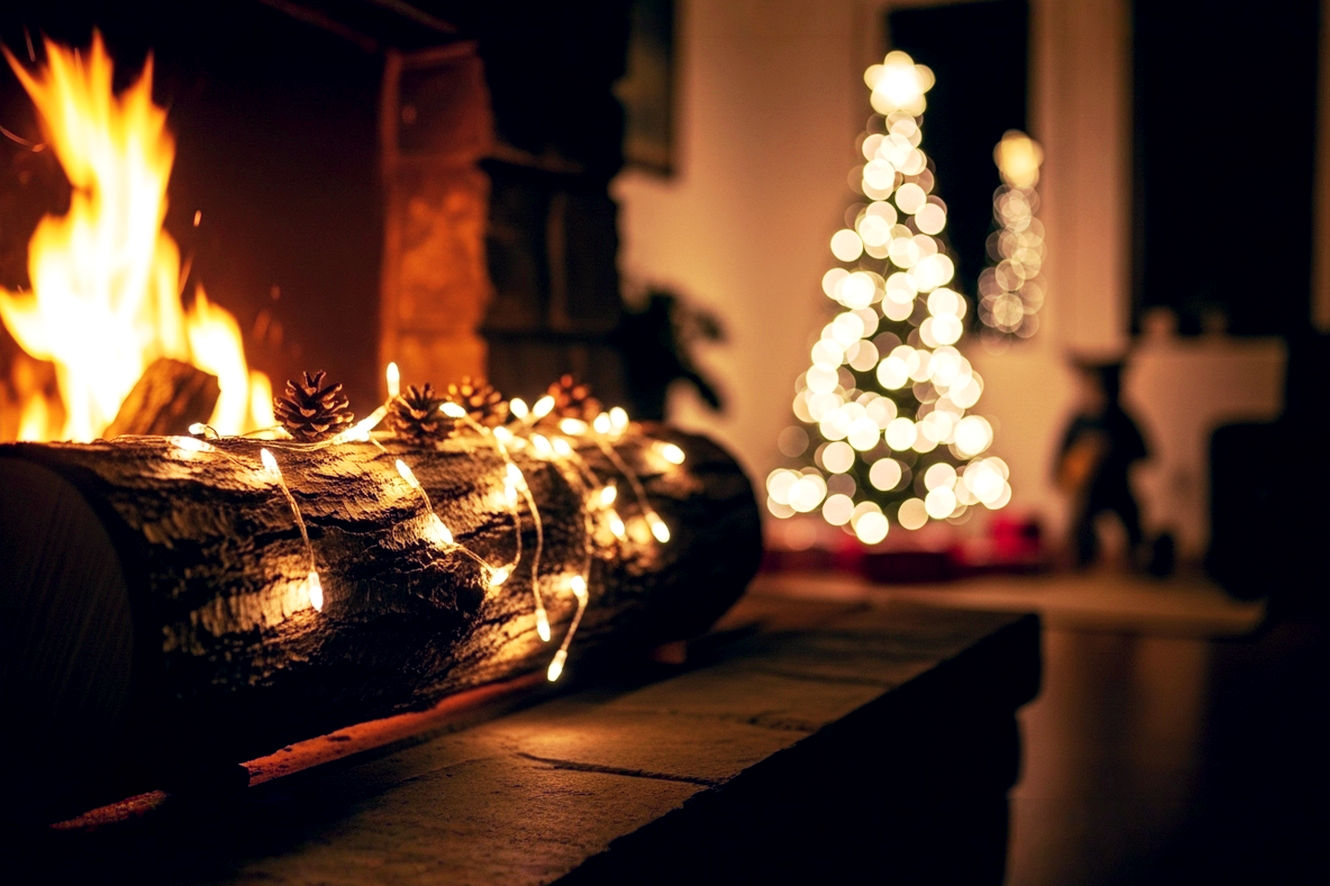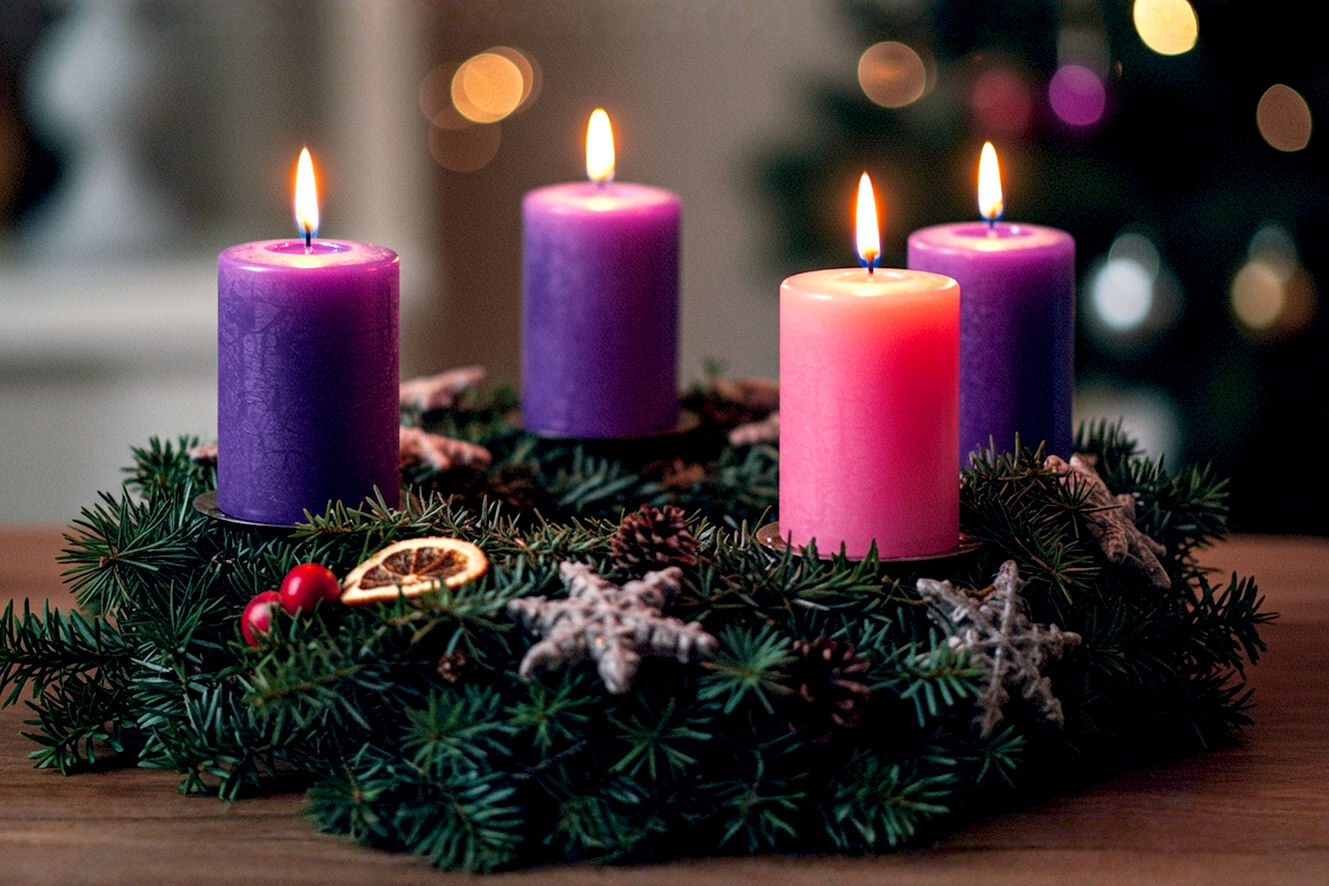This post may contain affiliate links. If you make a purchase through these links, we may earn a commission at no additional cost to you.
The Advent wreath, with its four candles, is one of the most powerful and visible symbols of the Catholic liturgical year. For many, the simple act of lighting a candle each Sunday is a cherished family tradition, a steady beacon of hope and anticipation in the bustling lead-up to Christmas. But beyond the tradition itself lies a rich tapestry of history, deep-rooted symbolism, and practical meaning that gives this simple ceremony its profound power. This definitive guide will take you through every aspect of lighting Advent candles, from the ancient origins of the wreath to the step-by-step process of your weekly lighting ceremony, ensuring you have a complete and comprehensive understanding of this beautiful custom.
The Foundational History and Enduring Symbolism of the Advent Wreath
To truly appreciate the Advent wreath, you have to understand where it came from. The history is a fascinating blend of ancient traditions and Christian adaptation, creating a symbol that has resonated for centuries.
The Origins of the Advent Wreath: A Tapestry of Tradition
The roots of the Advent wreath are not found in the early Christian Church, but rather in the pagan traditions of Northern Europe. In the darkest, coldest days of winter, pre-Christian Germanic peoples would light candles in circular wreaths made of evergreen branches. The circle represented the cycle of the seasons and the eternal nature of life, while the evergreens symbolized the persistent life that endured through the harsh winter. The light of the candles was a sign of hope, a prayer for the return of the sun and the end of the long darkness.
As Christianity spread throughout these regions, the Church often adopted and repurposed local customs, infusing them with new, Christian meaning. By the 16th century, German Lutherans began using these wreaths in a new way: as a symbol of waiting for Christ’s birth. The candles, instead of representing the sun, now represented the light of Christ piercing the darkness of sin and death. This Christianized practice gradually spread throughout Germany and then to other parts of the Christian world.
The practice was eventually formalized within the Catholic Church, though it was not an official liturgical rite until the late 20th century. Over time, the Advent wreath evolved from a local folk custom to a widely recognized and beloved part of the Advent season, both in church services and in homes. The wreaths you see today are a direct link to these ancient traditions, but their meaning has been elevated to reflect a deep Christian theology.
Deconstructing the Wreath: Every Element’s Meaning
The Advent wreath isn’t just a decoration; it’s a carefully constructed symbol where every element has a specific meaning. Understanding these components makes the act of lighting the candles far more powerful.
- The Circular Shape: This is a crucial element. The wreath has no beginning and no end, symbolizing the eternity of God and the unending love we have for Him. It also reminds us that the liturgical year is a cyclical journey, leading us back to the birth of Christ each year. It’s a perfect visual representation of the promise of eternal life.
- The Evergreens: The branches of pine, spruce, or fir that make up the wreath are chosen for their resilience and ability to stay green even in the depths of winter. This symbolizes the hope of eternal life, the immortality of the soul, and the steadfastness of God’s promises. It is a sign that even when the world seems cold and dark, life and hope persist.
- The Candles: The candles themselves are a potent symbol. They represent Christ, the Light of the World, who comes to dispel the darkness. As each candle is lit, the wreath grows progressively brighter, representing the increasing hope and anticipation as we draw closer to Christ’s birth. The lighting ceremony is a tangible way to mark the passage of time and see our hope literally grow brighter.
- The Colors: The colors of the candles have been chosen to represent specific themes of the season. In the Catholic tradition, there are four candles: three purple and one rose. These colors carry distinct liturgical significance.
The Core Components: Understanding the Advent Candles and Their Meaning
The Advent candles are at the heart of the ceremony. Each one represents a different week and a different theme, guiding us on a spiritual journey. Knowing what each candle stands for is essential to fully participate in the ceremony.
The Liturgical Colors: A Visual Journey Through Advent
The standard Catholic Advent wreath uses a specific color scheme with a very deliberate meaning.
- Purple (Violet): Three of the four candles are purple. In the Catholic tradition, purple is the color of penance, preparation, and royalty. During Advent, it signifies a time of spiritual preparation and repentance, a period of self-reflection and prayer as we get ready for the coming of Christ. It also calls to mind Christ as the King of Kings, whose arrival we anticipate. Historically, purple has been used in penitential seasons like Lent, so its use here connects Advent to a larger pattern of spiritual discipline in the Church.
- Rose (Pink): The third candle is traditionally rose-colored (often called pink, though “rose” is the liturgical term). This candle is lit on the third Sunday of Advent, which is known as Gaudete Sunday. The Latin word Gaudete means “Rejoice.” The rose color symbolizes a moment of joyful anticipation in the midst of the penitential season. It’s a reminder that even in our preparations, there is a deep and abiding joy because Christmas is near. The feeling is like a small reprieve, a flash of light before the final stretch of the season.
- The Christ Candle (Optional): Many Advent wreaths now include a fifth, white candle in the center. This is known as the Christ Candle. White is the liturgical color of purity, light, and triumph. It represents Christ himself, who is without sin and is the “Light of the World.” This candle is not lit until Christmas Eve or Christmas Day, symbolizing the triumphant arrival of Jesus, the culmination of all the waiting.
The Four Weeks: A Thematic Progression of Hope, Faith, Joy, and Peace
Each week of Advent has a specific theme associated with it. When you light the candle for that week, you’re not just marking time; you’re entering into a particular aspect of the Advent story.
- First Sunday of Advent: The Candle of Hope (The Prophet’s Candle): The first purple candle represents hope. It recalls the prophets, particularly Isaiah, who foretold the coming of the Messiah. This candle reminds us to be hopeful, to look forward with eager expectation to Christ’s second coming, and to trust in God’s promises. The theme is about waiting with hope, just as the ancient Israelites waited for the arrival of their Savior.
- Second Sunday of Advent: The Candle of Faith (The Bethlehem Candle): The second purple candle represents faith. It often recalls the story of John the Baptist, who was the voice crying out in the wilderness, calling people to repent and prepare the way of the Lord. It calls us to have faith and to prepare our hearts for Christ’s arrival, just as John the Baptist prepared the people. This candle asks us to examine our own faith and to strengthen it in preparation for Christ.
- Third Sunday of Advent: The Candle of Joy (The Shepherd’s Candle): This is the rose-colored candle. It represents the joy the world felt at the coming of the Lord. The name “Shepherd’s Candle” is a nod to the shepherds who were the first to hear the good news of Christ’s birth. The lighting of this candle on Gaudete Sunday is a joyous moment, a brief pause to celebrate the nearness of Christ’s birth and the joy that it brings.
- Fourth Sunday of Advent: The Candle of Peace (The Angel’s Candle): The final purple candle represents peace. It often recalls the angels who announced Christ’s birth, bringing a message of “peace on earth to people of goodwill.” This candle reminds us to embrace the peace that Christ brings and to become instruments of that peace in the world. As we light this final candle, we know the wait is nearly over.
The Practical Guide to Lighting the Advent Wreath
Now that you understand the history and symbolism, here is a practical, step-by-step guide to lighting your Advent wreath at home. This section will walk you through setting up your wreath, the weekly ceremony, and safety considerations.
Setting Up Your Advent Wreath at Home
Before you can begin the weekly ceremony, you’ll need to prepare your wreath.
- Select Your Materials: You’ll need a wreath base, three purple candles, and one rose (pink) candle. You can either buy a pre-made wreath with the candles included, or you can buy the components separately. Many Catholic stores sell complete kits.
- Choose a Safe Location: Place your Advent wreath in a prominent but safe location in your home, such as the dining room table or a side table. Crucially, make sure it is on a fire-resistant surface and away from any flammable materials like curtains or napkins. Never leave the candles unattended while they are lit.
- Arrange the Candles: There is no single “correct” way to arrange the candles, but the most common practice is to place the three purple candles and the single rose candle evenly spaced around the circle. The rose candle is typically placed opposite the first purple candle, making it visually distinct. If you are using a Christ Candle, place it directly in the center.
The Step-by-Step Lighting Ceremony: A Week-by-Week Breakdown
The lighting ceremony is simple, but the key is consistency. Make it a family ritual, something you do together each Sunday of Advent.
The First Sunday of Advent: The Candle of Hope
- Step 1: Gather your family around the wreath.
- Step 2: Begin with an opening prayer.
- Step 3: Light the first purple candle. This is the Candle of Hope.
- Step 4: Read the scripture for the week.
- Step 5: Spend a few moments in a brief reflection on the week’s theme of hope. Discuss what it means to hope for Christ’s coming.
- Step 6: Conclude with a closing prayer. Let the candle burn for a short time before safely extinguishing it.
The Second Sunday of Advent: The Candle of Faith
- Step 1: Gather your family.
- Step 2: Begin with an opening prayer.
- Step 3: Light the first purple candle from the previous week.
- Step 4: Light the second purple candle, the Candle of Faith.
- Step 5: Read the scripture for the week.
- Step 6: Reflect on the theme of faith and preparation.
- Step 7: Conclude with a closing prayer.
The Third Sunday of Advent (Gaudete Sunday): The Candle of Joy
- Step 1: Gather your family.
- Step 2: Begin with an opening prayer.
- Step 3: Light the first two purple candles from previous weeks.
- Step 4: Light the rose-colored candle, the Candle of Joy.
- Step 5: Read the scripture for the week.
- Step 6: Reflect on the theme of joy. This is a moment to celebrate the coming of Christ.
- Step 7: Conclude with a closing prayer.
The Fourth Sunday of Advent: The Candle of Peace
- Step 1: Gather your family.
- Step 2: Begin with an opening prayer.
- Step 3: Light all three previous candles.
- Step 4: Light the final purple candle, the Candle of Peace.
- Step 5: Read the scripture for the week.
- Step 6: Reflect on the theme of peace.
- Step 7: Conclude with a closing prayer.
Prayers, Scripture, and Reflections for Each Week
While the act of lighting the candles is powerful, the words you say during the ceremony are what give it its meaning. Here are suggested prayers and scripture passages to use for each week.
The First Sunday of Advent: A Prayer for Hope
Suggested Prayer: Lord Jesus, you are the hope of the world. As we light the first candle, we pray for the grace to prepare our hearts for your coming. Fill us with hope and expectation as we wait for the fulfillment of your promises. Amen.
Scripture Passage: “Therefore, stay awake! For you do not know on which day your Lord will come.” — Matthew 24:42
Reflection: This week, we begin our Advent journey. Our focus is on hope, a confident expectation of what is to come. The ancient prophets foretold a Messiah who would come to save us, and their hope was the very foundation of our faith. We are called to share in that hope, not just for Christmas, but for Christ’s final return. This candle is a beacon of that hope, reminding us to be watchful and prepared.
The Second Sunday of Advent: A Prayer for Faith and Preparation
Suggested Prayer: Heavenly Father, as we light the second candle, we pray that we may have the faith of John the Baptist. Help us to clear the path for your Son in our lives by turning away from sin and toward your love. Strengthen our faith so that we may be truly ready to receive Him. Amen.
Scripture Passage: “A voice of one crying out in the desert: ‘Prepare the way of the Lord, make straight his paths.'” — Mark 1:3
Reflection: Last week, we focused on hope. This week, we move to faith. John the Baptist’s role was to prepare the way for Jesus, calling people to a conversion of heart. This is our task, too. To truly prepare for Christ’s arrival, we must have faith in His promises and be willing to change our lives to follow Him. This second candle represents that call to action, reminding us that Advent is not a passive waiting period, but an active time of spiritual preparation.
The Third Sunday of Advent (Gaudete Sunday): A Prayer of Joy
Suggested Prayer: Lord Jesus, as we light the rose candle, we rejoice in your nearness. We are filled with joy because our salvation is at hand. Help us to share this joy with others and to be a light in the darkness, just as you are the true light of the world. Amen.
Scripture Passage: “Rejoice in the Lord always. I shall say it again: rejoice! Your kindness should be known to all. The Lord is near.” — Philippians 4:4-5
Reflection: The rose candle is a moment of deep, spiritual joy. On this third Sunday, Gaudete Sunday, we are reminded that our waiting is not sorrowful, but joyful. The coming of the Savior is a reason for profound celebration. The shepherds were filled with joy when they heard the good news, and we are called to feel that same happiness. The light of this candle is a bright flash of that joy, reminding us that Christmas is very, very close.
The Fourth Sunday of Advent: A Prayer for Peace
Suggested Prayer: Father of Peace, as we light the final purple candle, we pray for the peace that only your Son can bring. Grant us the grace to be patient in our final days of waiting and to live lives that reflect the peace we are about to receive. May our hearts be filled with peace as we welcome our Savior. Amen.
Scripture Passage: “The angel Gabriel was sent from God to a town of Galilee called Nazareth, to a virgin betrothed to a man named Joseph, of the house of David, and the virgin’s name was Mary.” — Luke 1:26-27
Reflection: This final candle represents peace, the divine peace that Christ brings to a world of turmoil. We reflect on the ultimate peace brought about through the Incarnation. The angel’s message to Mary, the Annunciation, is the final announcement of this coming peace. As we light all four candles, the wreath is at its brightest, symbolizing the climax of our waiting and the imminent arrival of the Prince of Peace.
Common Questions and Advanced Considerations
As with any long-standing tradition, questions often arise. This section addresses common scenarios and provides additional context to enrich your understanding.
What if I Miss a Week? Troubleshooting and Solutions
This is a common concern. Don’t worry if you miss a Sunday! The purpose of the Advent wreath is to foster a spiritual rhythm and a connection to the season, not to create a source of stress or anxiety.
- Simple Solution: If you miss a Sunday, simply light the candle for the current week plus any candles from previous weeks that should have already been lit. For example, if you miss the second Sunday, on the third Sunday (Gaudete Sunday), you would light the candles for the first, second, and third weeks. The cumulative effect of the light is what matters most.
- Theological Perspective: The spiritual value comes from the intention and the act of prayerful waiting, not from a rigid adherence to a schedule. God understands the realities of modern life. The best thing to do is to catch up and continue the tradition as soon as you can.
When Do You Extinguish the Candles?
The Advent wreath is a visual reminder and a focal point for prayer, not a continuous light source.
- Practice: Traditionally, the candles are lit during the family’s weekly prayer ceremony and then are immediately extinguished. Some families choose to let them burn a little longer, perhaps during dinner, but they should never be left unattended.
- The Cumulative Effect: A beautiful tradition is to let the candles burn for slightly longer each week, so that by the fourth week, the light is at its fullest for a longer period, symbolizing the increasing anticipation and the nearing of Christ’s arrival.
The Christ Candle: An Optional but Meaningful Addition
While the four-candle wreath is the standard, many families and churches are now incorporating the Christ Candle.
- When to Light It: The Christ Candle is not lit until Christmas Eve or Christmas Day. After the final Advent candle has been lit on the fourth Sunday, the wreath sits with all four candles burning until it’s time to celebrate Christ’s birth.
- The Culmination: On Christmas Eve or Christmas Day, after all four Advent candles are lit, the white Christ Candle is lit. This is the culmination of all the waiting. The wreath, now at its brightest, is a vibrant symbol of Christ, the Light of the World, who has finally come.
Historical Context vs. Modern Practice: A Synthesis
The Advent wreath has evolved from a simple German Lutheran custom to a widely adopted Catholic practice. Its use in the home is still a private devotion, whereas its use in the church is part of a larger liturgical celebration.
- In the Church: The lighting of the wreath is often accompanied by specific liturgical prayers and readings that are part of the Mass. The wreath is a public symbol for the entire parish.
- In the Home: The Advent wreath is a tool for family devotion. It helps a family slow down and mark the passing of the season together. It’s an opportunity for parents to teach children about the meaning of the season beyond the commercial aspects.
The Broader Impact: Fostering a Spiritual Rhythm and Family Tradition
The Advent wreath’s impact extends far beyond the five minutes you spend lighting the candles. It has a profound effect on the spiritual life of a family and acts as a counter-cultural symbol.
The Advent Wreath as a Teaching Tool
For families with young children, the Advent wreath is an invaluable teaching tool.
- A Tangible Countdown: The weekly lighting of a new candle provides a tangible, visual countdown to Christmas that even the youngest children can understand.
- Sensory Experience: The soft candlelight, the smell of the evergreens, and the simple act of prayer create a sensory experience that helps children engage with the season’s themes of hope, faith, joy, and peace in a very concrete way.
- Connecting with the Liturgical Year: It helps children understand that Christmas is not just a single day, but the culmination of a four-week season of preparation, a central tenet of the Catholic faith.
The Advent Wreath’s Societal Context: A Counter-Cultural Practice
In a world that rushes headlong into a commercialized “holiday season” on November 1st, the Advent wreath stands as a powerful, counter-cultural symbol.
- A Call to Slow Down: The wreath calls us to slow down, to wait patiently, and to prepare our hearts. It forces us to resist the temptation to jump straight to Christmas celebrations and instead to embrace the quiet, reflective waiting of Advent.
- Focusing on the Spiritual: By centering our attention on the lighting of a candle and a simple prayer, the Advent wreath helps to re-center the season on its true meaning: the coming of Christ. It’s a quiet but firm reminder that the heart of Christmas is not presents and parties, but Jesus.
Concluding the Season: Beyond the Final Candle
After the fourth Advent candle is lit, and the Christ Candle has been lit on Christmas Day, what happens next?
- The End of the Liturgical Season: Advent ends on Christmas Eve, and the Christmas season begins. It’s appropriate to keep the wreath with its candles burning throughout the Christmas season, especially if it has a Christ Candle in the center. The wreath transitions from being a symbol of waiting to a symbol of celebration.
- Putting Away the Wreath: You can choose to put away the wreath at any point during the Christmas season, but a good practice is to extinguish and put away the candles after the Feast of the Epiphany (January 6th), which marks the end of the liturgical Christmas season. The tradition reminds us that all good things must come to an end, but the light of Christ remains with us all year.






